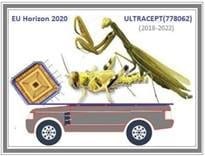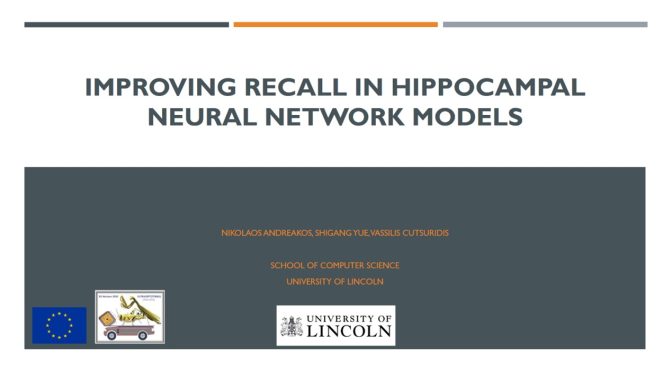Nikolas Andreakos is a PhD candidate at the University of Lincoln, who is developing computational models of associative memory formation and recognition in the mammalian hippocampus.
Recently Nikolas attended the 16th International Symposium of Cognition, Logic and Language. The conference took place as a hybrid model on the 25th August 2022, in Riga, Latvia and online.

About the Symposium 2022, Linkages between space and memory: processes and representations
Navigation and episodic memory are core features of human cognitive processing. Although they seem very different, research has revealed behavioural and neural linkages between the two domains. This symposium aims to integrate perspectives from research in the two areas, using techniques from psychology and neuroscience (as well as linguistics, computer science, AI, and philosophy, depending on participants’ interests). The symposium focused primarily on the following topics, but was not limited to them:
- Spatial context and memory
- Episodic memory and spatial learning
- Developmental trajectory of navigation and episodic memory
- Neural principles of navigation and episodic memory
Nikolas presented his research Improving recall in hippocampal neural network models.
Abstract
Relevant theory
Studies on memory capacity in neural networks have shown the number of storable memories scale with the number of neurons and synapses in the network. As the memory capacity limit is reached, then stored memories interfere, and recall performance is reduced. A well-established bio-inspired neural network model of the hippocampus was employed to improve its recall performance (RP) as more patterns of various overlaps are stored in its synapses when specific synaptic connections in the network were modulated.
Research design
The neural network model consisted of 100 multi-compartmental Hodgkin-Huxley based excitatory (pyramidal) cells and four types (axo-axonic, basket, bistratified, OLM) of inhibitory neurons firing at specific phases of a theta oscillation imposed by an external inhibitory signal targeting only the inhibitory cells in the network. Inhibitory cells inhibited specific compartments of network’s excitatory cells. Two excitatory inputs (sensory and contextual inputs) targeted dendritic compartments of cells in the network and caused cells to fire.
Methods
Simulations were performed in NEURON and analysed by MATLAB.

Results
Results showed when both sensory and contextual inputs were present during recall and were 100% similar, the network’s performance improved. When their similarity was reduced (40%) or were completely dissimilar, then RP dropped. Results also showed the number of cells coding for a memory (engram cells) plays a crucial role in RP. As the numbers of engram cells coding for a memory is increased, then RP get worse. This finding has serious implications to the nature of memory.

When asked about his experience, Nikolas said:
“I really enjoyed attending and presenting at the event, especially the discussion I had with Prof Ranganath who made some useful points about my research. Additionally, the atmosphere was friendly, and I had the opportunity to attend some really interesting presentations and extend my knowledge.
Watch Nikolas’ presentation here:

